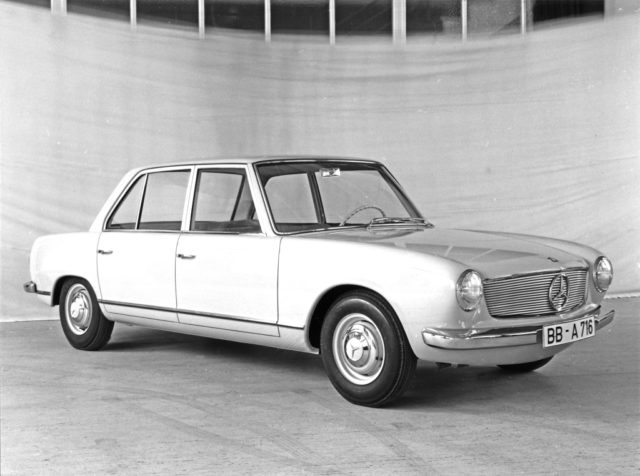60 years ago the Board of Management of Daimler-Benz AG held four meetings to deliberate on an initiative by major shareholder Friedrich Flick: in early 1958 he proposed a merger between Daimler-Benz AG and Auto Union GmbH. The industrialist reckoned that the model ranges of the two companies would complement each other. This would enable synergies to be used for future development work. At that time Flick owned a shareholding of around 40 percent in each of the two companies. On 6 March 1958, the Board of Management in Stuttgart finally decided to take over a majority of the Ingolstadt-based company with the four rings as its trademark.
On 1 April 1958, the Supervisory Board of Daimler-Benz AG approved the acquisition of just under 88 percent of the authorised share capital of Auto Union GmbH
The transaction was retrospective to the beginning of 1958. Auto Union AG was founded in Chemnitz in 1932. Before the Second World War, it was one of the major competitors of Mercedes-Benz. It had the Audi, DKW, Horch and Wanderer brands. This rivalry also manifested itself in motorsport. There the Silver Arrows from Stuttgart competed against the racing cars of Auto Union. Following the reincorporation of Auto Union GmbH in Ingolstadt in 1949, the only vehicles in production were the two-stroke models under the DKW brand. And, for a few years, the likewise two-stroke Auto Union 1000 (1958 to August 1963).
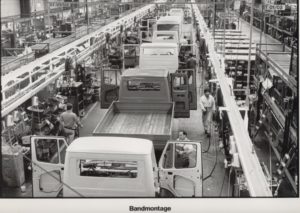
On 14 April 1958, the first joint Board of Management meeting between Daimler-Benz AG and Auto Union GmbH happened in Stuttgart-Untertürkheim
The agenda included two important questions concerning the technical direction for the future. For example, the representatives of Daimler-Benz AG had their doubts whether the three-cylinder two-stroke engines of DKW would have much of a chance in the passenger car market even for just a few years. In fact, the matter appeared to have been settled. Auto Union had already declared itself willing to equip the successor to the DKW 3=6 passenger car with a four-cylinder four-stroke engine. Ingolstadt was not willing to dispense with the two-stroke engine at once, however.
At the end of April 1958, the Daimler-Benz Board of Management members Professor Fritz Nallinger and Wilhelm Künkele travelled to Düsseldorf. The aim was to begin coordinating the activities of the two companies. In August 1958 Hanns-Martin Schleyer and senior engineer Arthur Mischke were appointed to manage the liaison between Daimler-Benz AG and Auto Union. And on 21 December 1959 Daimler-Benz made an agreement to acquire the remaining shares of the Ingolstadt company. That happened on 31 December 1959. From 1960, Auto Union, therefore, became a wholly-owned subsidiary of Daimler-Benz AG.
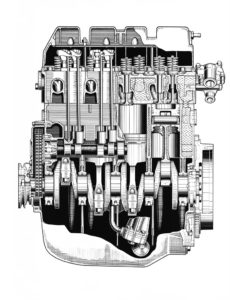
Birth of the Mercedes-Benz plant in Düsseldorf
In July 1958 began the project for a completely new Auto Union plant in Ingolstadt. This went into operation in 1959. This immediately opened up capacities that were highly attractive to Mercedes-Benz at the Düsseldorf location of Auto Union founded in 1950. And when the Supervisory Board of Auto Union decided to relocate its production entirely from Düsseldorf to Ingolstadt on 31 May 1961. This made fundamental changes possible.
In 1961 Daimler-Benz AG took out a lease on the location. It was on a former Rheinmetall-Borsig production site after the Second World War. The Stuttgart-based company then relocated production of the L 319 van and the OM 636 diesel engine, as well as the assembly of steering gears and gearshift linkages, to Düsseldorf. In 1962 Auto Union sold the Düsseldorf plant to Industriemotoren GmbH, a subsidiary of Daimler-Benz AG.
This firmly enshrined the Düsseldorf plant in the company’s production network. Over the years it was continuously expanded to reach the outstanding position it holds today. In recent years alone, Daimler has invested around 300 million euros in the location. Today around 6,600 employees work in Daimler AG’s largest worldwide van plant in Düsseldorf. It is the lead plant for worldwide production of the Mercedes-Benz Sprinter. In early March 2018, the production line for the latest-generation Sprinter went into operation in Düsseldorf.
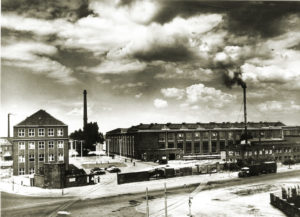
Audi models with Mercedes-Benz genes
While Düsseldorf was being established as the lead plant for the Mercedes-Benz van division, the aim was also to modernise the production of Auto Union now concentrated in Ingolstadt. The financial resources required for this were considerable. The investment in Auto Union between 1959 and 1964 was more than 340 million German marks. And that was in addition to the proceeds from the sale of the Düsseldorf plant to Daimler-Benz AG.
Yet development at the company progressed only slowly. This is why Daimler-Benz dispatched one of its most capable engineers to Ingolstadt on 8 October 1963. That was Ludwig Kraus, head of design in the Mercedes-Benz pre-development department. Kraus had been designing marine diesel engines since the late 1930s. He played a major role in the design of the 1.7-litre OM 636 diesel engine after 1945. In the early 1950s, he was head of design for the successful Mercedes-Benz W 196 R Formula 1 racing car and the 300 SLR (W 196 S) racing sports car. Now his mission was to accelerate changes at Auto Union. Kraus had something of a home advantage, as he had gone to school and obtained his higher school leaving certificate in Ingolstadt.
His arrival was to have far-reaching consequences.
This is because Ludwig Kraus not only brought a team of highly motivated young Daimler-Benz technicians with him to Ingolstadt
He also had a new, almost fully developed four-cylinder engine. Its in-house designation was M 118 and the original code name was “Mexico”. The engine featured high compression ratio (1:11.2). Combined with the intense swirling effect on the intake mixture of helical intake ducts, it led to a low fuel consumption. It was also low in vibrations, as all the tests at the time confirmed.
As a so-called medium-pressure engine, this Mercedes-Benz four-cylinder unit had its 1965 debut in the new Auto Union Audi Premiere, also known internally as the F103. This vehicle was the first post-war passenger car by Auto Union to feature a four-stroke engine. And also the first post-war model under the Audi brand.
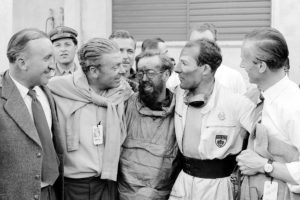
Moreover, subsequent vehicle developments at Auto Union and its Audi brand also bore the distinct signature of Mercedes-Benz
This is because Ludwig Kraus remained in Ingolstadt as Technical Director when Daimler-Benz AG sold its majority in Auto Union to the Volkswagen group on 1 January 1965. From 1966 the company was a wholly-owned subsidiary of Volkswagen.
Kraus and the other former Mercedes-Benz engineers were familiar with the prototype development work. There were development ideas since 1953 for the possible Mercedes-Benz medium-class model series W 122 and W 119. These had a front section reminiscent of the W 113-series SL sports cars, modern body lines with a low beltline and a dynamic rear end design. It is therefore not surprising that the body of the first Audi 100 developed at Auto Union shares features with the W 119. This model too had the four-cylinder medium pressure engine. Kraus initially worked on the medium class car in secret. It finally celebrated its premiere in 1968. And it brought the company its great leap forward into the future. The design of Audi 80 (1972) and Audi 50 (1974) also happened under the aegis of Kraus.
Before Audi there was Auto Union. Successfully competing with its supercharged Type D during the 1938 world grand prix racing series #ThrowbackThursday #AudiHeritage #TypeD pic.twitter.com/HxOuS3sJT7
— Audi DT Toronto (@AudiDowntown) April 5, 2018






















